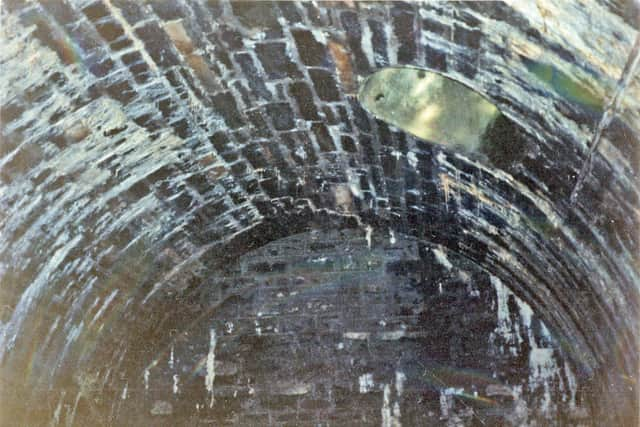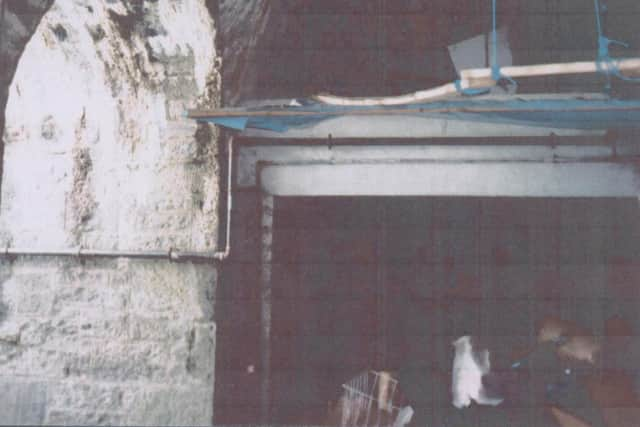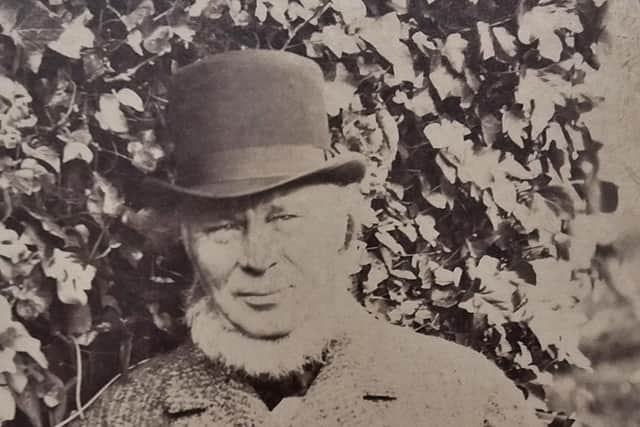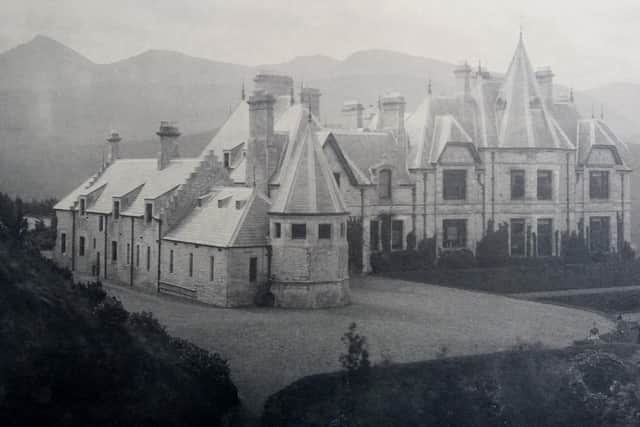Was this tunnel built on a Highland estate as part of the London Underground?
Now the debate over why Sir John Fowler constructed it beside his Braemore House mansion has been rekindled by a new book on plans for a railway line to Ullapool.
Author Andrew Drummond believes Sir John built it to perform tests as part of his work on the first London Underground line.
Advertisement
Hide AdAdvertisement
Hide AdHowever, heritage experts and one of the engineer’s descendants said it was more likely to have been constructed as a stable or byre.


The 38ft-long oddity, built around 1867, remains in place despite the house being demolished in the 1960s and twice replaced with new houses on the site.
The current one was built by the estate’s Danish owner Christopher Kiaer Thomsen.
Mock-up
Drummond, whose book A Quite Impossible Proposal – How Not to Build a Railway is published on Thursday, wrote: “Sir John Fowler designed London’s Metropolitan Railway.


"In the grounds of Braemore House there is a full-sized mock-up of one of the London tunnels to test ventilation.
“This was the closest Ullapool came to having a railway.”
Sir John is included in Drummond’s book because of his involvement in the first of several attempts to build a line between the main line at Garve and Ullapool, which would have passed through Braemore.
The author told Scotland on Sunday: “The building does look very much like a railway tunnel, and there are circular shafts in the roof which could readily be for ventilation.


“We know Fowler had significant problems with the ventilation of his Metropolitan Railway and that various solutions were attempted in the years after its construction.
Advertisement
Hide AdAdvertisement
Hide Ad“Trying one solution out in the contemplative and de-stressed atmosphere of his Ross-shire retreat does not seem far-fetched.
Showpiece
“It could be argued it might have functioned as a kind of showpiece for Sir John, demonstrating the kind of work he could produce as an engineer.


“If it also doubled - then or later - as a stable or similar outhouse, then so much the better.”
However, Peter Newling, Sir John’s great great grandson, who lives near Braemore and has extensively researched his eminent ancestor, was unconvinced.
He said: “The local belief that the ‘tunnel’ was experimental and related to the Metropolitan Railway is somewhat speculative.
Ice house
“It is a stone vaulted tunnel-like chamber beneath the hillside behind Braemore House.
"It is a listed structure, which the listing describes it as an ice house.
“I do not believe it was an ice house, but evidence of a railway connection is lacking.
“The tunnel is very short.
"It is hard to see how it could be useful in an experiment.
“My own view is that this is a stable.
Advertisement
Hide AdAdvertisement
Hide Ad“Braemore House stood in romantic isolation on a then bare mountainside.
“The usual outbuildings and offices for a big house are away well down the hill.
“Sir John clearly wanted the house to stand alone, not in a clutter of outbuildings.
“An overnight stable at least would be needed and the answer was to put this tucked invisibly into the hill just behind the house.
“But who knows?
"Despite my opinion, noone locally has been shifted from their inherited belief that the tunnel is an experiment in building or ventilation relating to the London Underground.”
Enigma
Siobhan Beatson, manager of Ullapool Museum, where Newling has given lectures on Sir John, said: “I am afraid you have stumbled into a bit of an enigma.”
Professor Roland Paxton of Heriot-Watt University in Edinburgh, secured category B listed status to help safeguard the structure nearly 30 years ago.
He said: “Sir John no doubt considered his tunnel form of stable/byre a pleasing Metropolitan Railway-associated embellishment to his Highland estate.”
Advertisement
Hide AdAdvertisement
Hide AdPaxton, who was chairman of the Institution of Civil Engineers’ panel for historical engineering works, reported in 1993: “About two years ago, the panel was requested by Colonel Mitford of Henley, Sir John Fowler’s great grandson, to see what could be done to safeguard the unlisted and virtually unknown engineering structures erected by Sir John for his enjoyment of his wild and beautiful estate at Braemore, near Ullapool.
"After investigation by the Scottish panel members and the submission of a case for class B listings for several works to Historic Scotland, it is pleasing to report that the ‘railway tunnel’ byre in the hillside behind the site of the house and an iron footbridge over the Gleann Mor gorge have now been listed as category B.
A message from the Editor:
Thank you for reading this story on our website.
While I have your attention, I also have an important request to make of you.
With the coronavirus lockdown having a major impact on many of our advertisers - and consequently the revenue we receive - we are more reliant than ever on you taking out a digital subscription.
Subscribe to scotsman.com and enjoy unlimited access to Scottish news and information online and on our app.
With a digital subscription, you can read more than 5 articles, see fewer ads, enjoy faster load times, and get access to exclusive newsletters and content.
Visit https://www.scotsman.com/subscriptions now to sign up.
Our journalism costs money and we rely on advertising, print and digital revenues to help to support them.
By supporting us, we are able to support you in providing trusted, fact-checked content for this website.
Joy Yates
Editorial Director
Comments
Want to join the conversation? Please or to comment on this article.